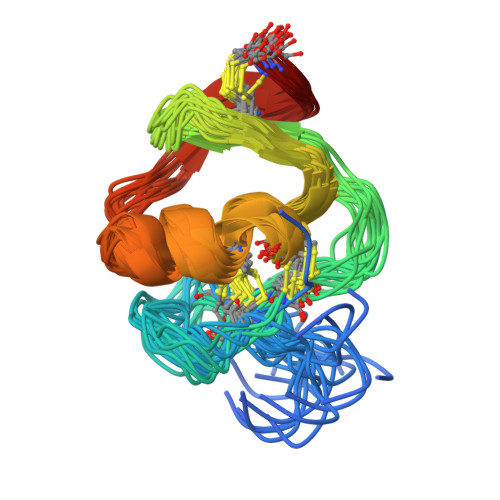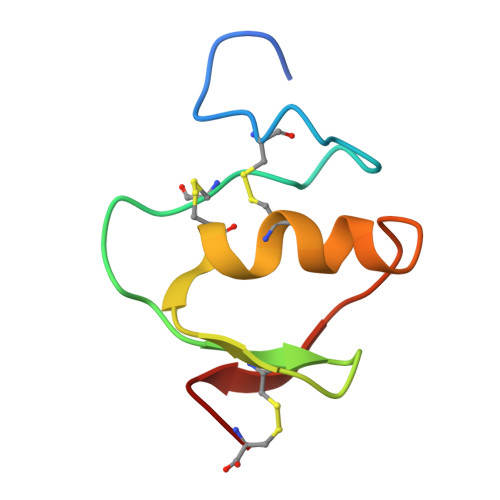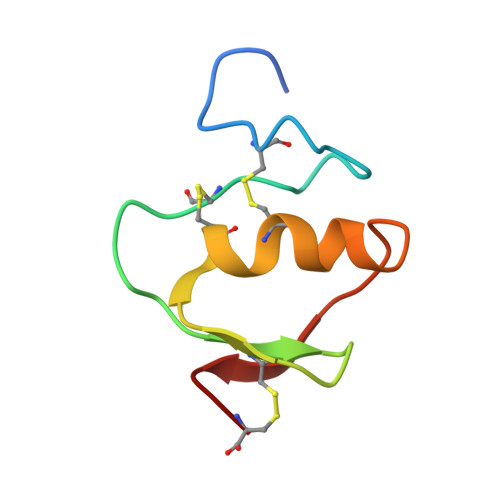The solution structure of the kallikrein-related peptidases inhibitor SPINK6.
Jung, S., Fischer, J., Spudy, B., Kerkow, T., Sonnichsen, F.D., Xue, L., Bonvin, A.M., Goettig, P., Magdolen, V., Meyer-Hoffert, U., Grotzinger, J.(2016) Biochem Biophys Res Commun 471: 103-108
- PubMed: 26828269
- DOI: https://doi.org/10.1016/j.bbrc.2016.01.172
- Primary Citation of Related Structures:
2N52 - PubMed Abstract:
Kallikrein-related peptidases (KLKs) are crucial for epidermal barrier function and are involved in the proteolytic regulation of the desquamation process. Elevated KLK levels were reported in atopic dermatitis. In skin, the proteolytic activity of KLKs is regulated by specific inhibitors of the serine protease inhibitor of Kazal-type (SPINK) family. SPINK6 was shown to be expressed in human stratum corneum and is able to inhibit several KLKs such as KLK4, -5, -12, -13 and -14. In order to understand the structural traits of the specific inhibition we solved the structure of SPINK6 in solution by NMR-spectroscopy and studied its interaction with KLKs. Thereby, beside the conserved binding mode, we identified an alternate binding mode which has so far not been observed for SPINK inhibitors.
Organizational Affiliation:
Institute of Biochemistry, Christian-Albrechts-University, Olshausenstr. 40, 24098 Kiel, Germany.


















